12 mind-blowing places for nature in Denmark
Denmark has some mystical and grand nature, full of fairy tale vibes. Here are the 12 best places for nature in Denmark you just have to visit.
Plan your trip to Denmark – Quick tips
👩🏻 Best guided tours in Denmark
- Copenhagen best sights tour (⭐️ 5/5)
- Copenhagen food tour (⭐️ 5/5)
- Møns Klint day tour (UNESCO) (⭐️ 4.5/5)
🏡 Where to stay in Denmark
- Copenhagen (unique Bali-style): Manon Les Suites (⭐ 8.5)
- Odense: Stemningsfuld lejlighed (⭐ 8.9)
- Aarhus: Hotel Oasia Aarhus City (⭐ 8.5)
I’ve been exploring my country quite a lot these past years, especially Jutland where I live.
And you know what? Even though Denmark is a small country, I discover new sides of the Danish nature almost every time I venture out.
Denmark’s landscape is diverse and beautiful and you can spend days exploring it. So, grab your camera and go visit these must-see places.
Read next: 17 beautiful small towns in Denmark you should visit
This post contains referral links for products I love. Adventurous Miriam earns a small commission at no extra cost to you if you purchase through my links. I appreciate your support ♡ Learn more
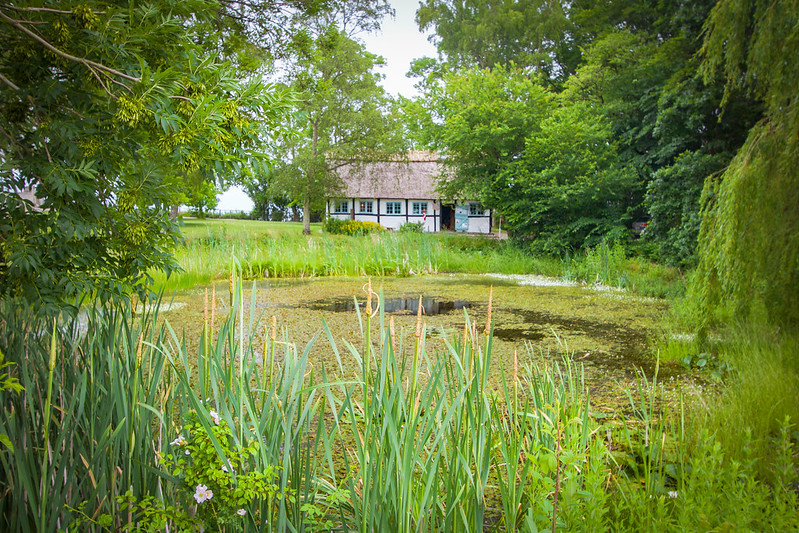
Where to find the best nature in Denmark
The great thing about Denmark is that it’s small so you’re always close to the sea, sand dunes, a gnarly troll forest, or an impressive natural UNESCO World Heritage Site.
From the colliding seas at Grenen and one of the largest migrating dunes in Europe to the world-class Black Sun phenomenon, 55-million-year-old fossils, and exposed granite formations, you’ll find beautiful nature in Denmark more or less anywhere.
To narrow it down a bit, I’ve highlighted the prettiest landscape in Denmark on this map. You can discover the best places in Denmark here.
How to get around in Denmark
The easiest, fastest, and most convenient way to visit Denmark’s beautiful nature is with your own private rental car.
This is nature, after all, so many of these places are located far from public transportation.
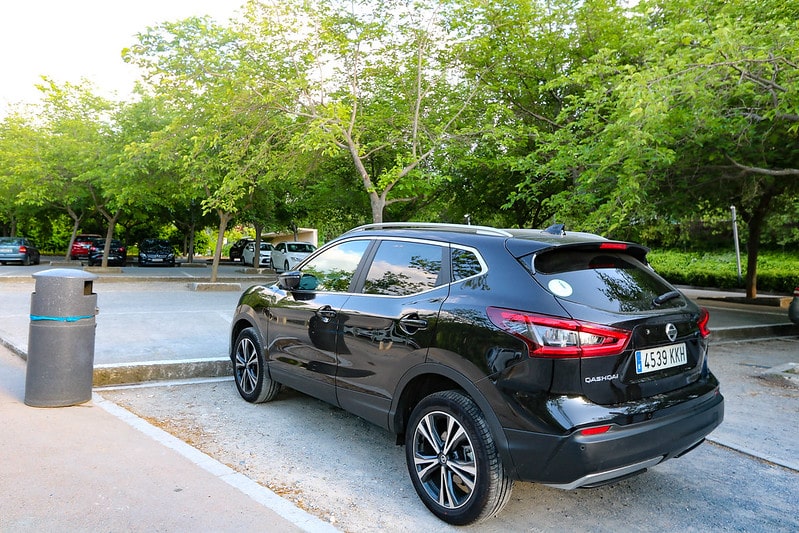
Best Car Rental Company:
DISCOVER CARS
When booking your car rental online, I recommend Discover Cars. They compare prices at car rental agencies all over the country to get you the best deal.
12 best places for nature in Denmark
1. Fur – the fossil island
I recently went to Fur Island for the first time and it was quite the adventure. Nowhere else in Denmark will you find such a colorful and unique landscape!
Fur is known as Denmark’s most wonderful island and it’s currently on the UNESCO tentative list for its moler (or moclay in English).
Moler is a special kind of clay layered with black volcanic ash. It’s 55 million years old and can be found on Fur Island along with fossils of fish, insects, and birds.
It’s the perfect place for a day trip and it’s easy to get around by car or bike.

2. Bulbjerg Klint
And then there’s Bulbjerg Klint – a 47m high limestone cliff and one of the most amazing places for nature in Denmark. It’s just breathtaking.
Bird-watchers can have a field day at Bulbjerg, too. As the only bird cliff in Denmark, it’s home to kittiwakes, common puffins, and northern fulmars. Even if you’re not into birds, this place is just epic.
What makes it special for me is the dramatic, grass-covered cliffs overlooking the roaring North Sea, and that wide-open, crisp-air feel at the top of the cliffs. You can see them from below, too.
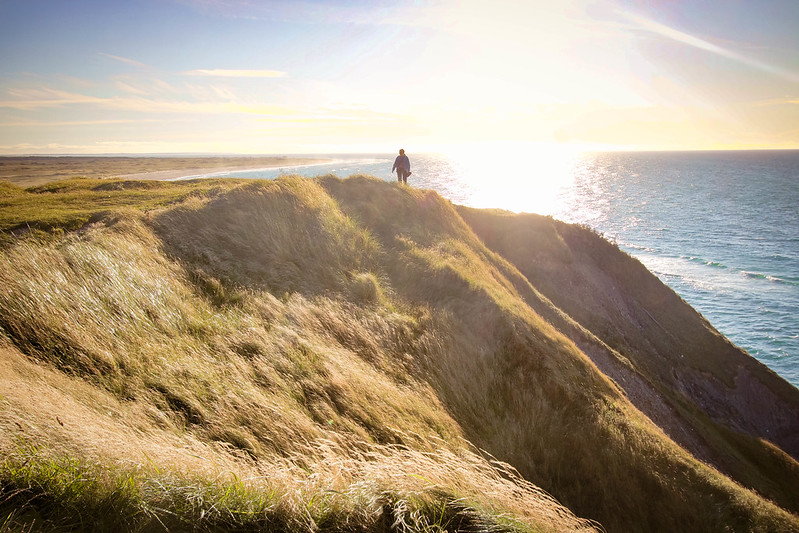
3. Thy National Park
It’s the first national park in Denmark. It has the wildest nature in the country. And it’s perfect for a multi-day road trip.
National Park Thy has a special wilderness, formed by the wind, sand, and the salty North Sea. There’s something untamed about Thy. Something restless, unpredictable, and uncompromising.
Here, you can enjoy a unique landscape: sand dunes, dune heaths, wetlands, and lakes with a number of rare species – from birds to insects and plants. And – after a 200-year absence from Denmark, wolves have been spotted here in 2012.

4. Råbjerg Mile
Råbjerg Mile is one of the largest migrating dunes in Europe, and it’s a super fun place to visit.
The sand dune consists of a 1000-m long and 1000-m wide mound with about 4 million m3 of sand. The highest point is 40 m above sea level and from the top, you can see all the way to Skagen.
It’s moving towards the Kattegat Sea at a rate of more than 15 m a year. It’s expected to cover the main road to Skagen in a century or two.

5. Rebild Bakker
Rebild Bakker has some of the most vibrant nature in Denmark. You can find heathland all over Denmark, but Rebild National Park is something special.
If you visit in August when the heath is in bloom, you can have a picnic or walk through the purple idyllic setting.
Rebild is also a great place for outdoor activities such as biking, hiking, or fishing.
Read next: 10 magical places to find cherry blossoms in Copenhagen

6. Stevns Klint
Stevns Klint is a UNESCO world heritage site and absolutely deserves a visit if you love nature. So does Møns Klint, by the way, which is located 1.5 hours south of Stevns Klint.
They’re both chalk cliffs and were formed millions of years ago when the sea covered Denmark.
Whereas Møns Klint isn’t on the UNESCO list, Stevns Klint made it there in 2014. That’s because the 40-meter-high cliff shows evidence of the giant meteorite that hit Earth and caused the mass extinction about 65 million years ago.
It’s an easy day trip from Copenhagen.

7. Jammerbugten
If you’re looking for spectacular nature at the North Sea coastline, go to Jammerbugten (The Bay Denmark).
With 13 beaches – all wide, white, and surrounded by rolling sand dunes – Jammerbugten has some of the best beaches in Denmark.
Jammerbugten also has one of the best mountain bike tracks in Denmark by Slettestrand. Or you can go for a walk in the forests, plantations and along the beaches. It’s wild, untamed, and – if you ask me – some of the best nature in Denmark.

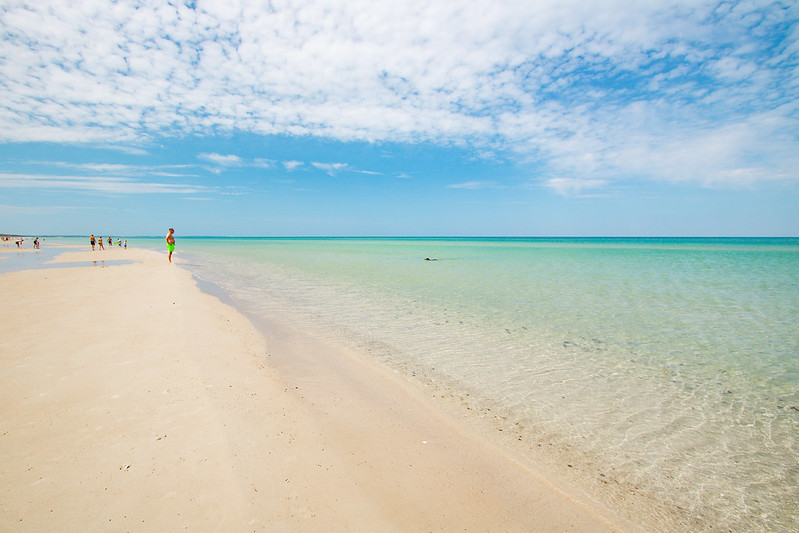
8. Faxe Kalkbrud
Faxe Limestone Quarry is such a beautiful and unique place with crystal blue lakes and sandy white hills – it’s unlike anywhere else in Denmark.
63 million years ago, it was at the bottom of the ocean. As a result, it’s the perfect place to find fossils.
You can join a guided fossil hunt organized by Geomuseum Faxe, but you can search on your own as well. Today, it’s used to extract calcium.

9. The Wadden Sea
The Wadden Sea (Vadehavet) is one of the natural UNESCO sites in Denmark. What makes this place unique is that the North Sea water flows into the Wadden Sea twice a day, flooding the mud flats with seawater.
When the tide is low, you can drive or take tractor-bus rides to offshore islands and watch harbor seals on the sandbanks.
During spring or autumn, you can also see the most famous natural sight in Denmark – Black Sun (sort sol). Black Sun is when hundreds of thousands of starlings turn the sky black by dancing and circling around. Don’t miss it!
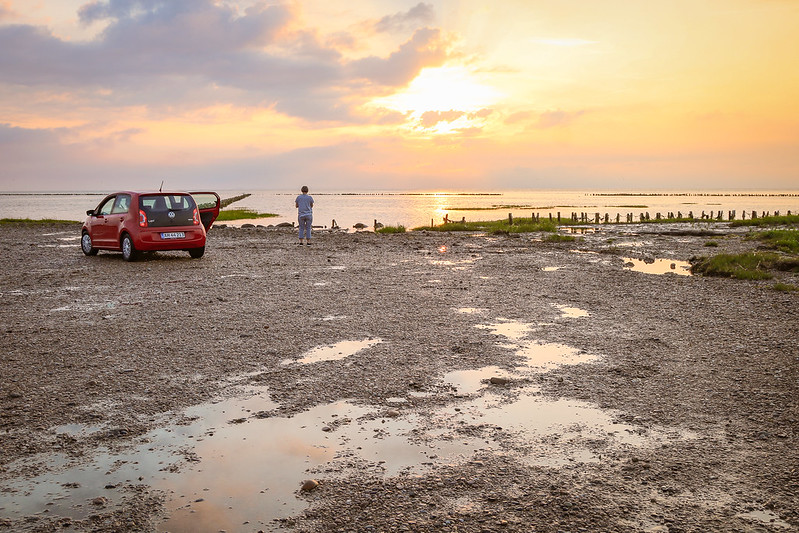
10. Bornholm
Bornholm is known as the sunshine island because it’s the sunniest place in Denmark. There’s a unique and idyllic landscape on this Baltic island, which is why Danes love to visit.
The island’s southern coast is lined with beautiful white-sand beaches including Dueodde, which has been voted one of the best beaches in Denmark on several occasions.
The northern coast on the other hand has some of the only cliffs in Denmark and is also home to Hammershus, the largest medieval fortress in Northern Europe.
If you visit, don’t miss out on the world-class food, especially at Christianshøjkroen and Fredensborg Hotel (try the lavish seafood buffet!).
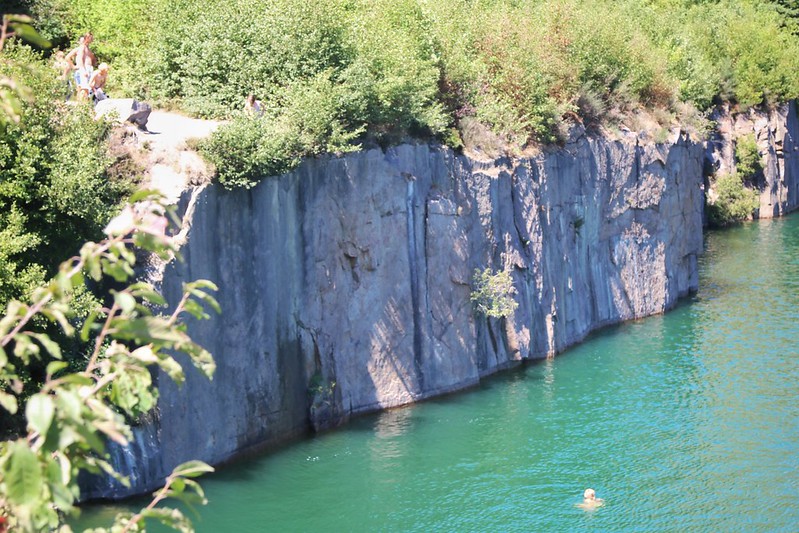
11. The troll forests
The twisted trees of Denmark’s troll forests are up to 200 years old and look as though they are bewitched.
This enchanting and a bit eerie landscape was planted as an attempt to reduce the sand flow in the area, but it didn’t work.
Now, these strange woods can be found in Thy National Park (Thagaards Plantage), Rold Forest (the Troll Forest), and Tisvilde.

12. Lille Vildmose
Lille Vildmose (Small Wild Bog) is the largest nature preserve in Denmark and Northern Europe’s largest raised bog.
You’ll find some of the most untouched nature in Denmark here, while you look for wild animals, from moose to deer and various birds.
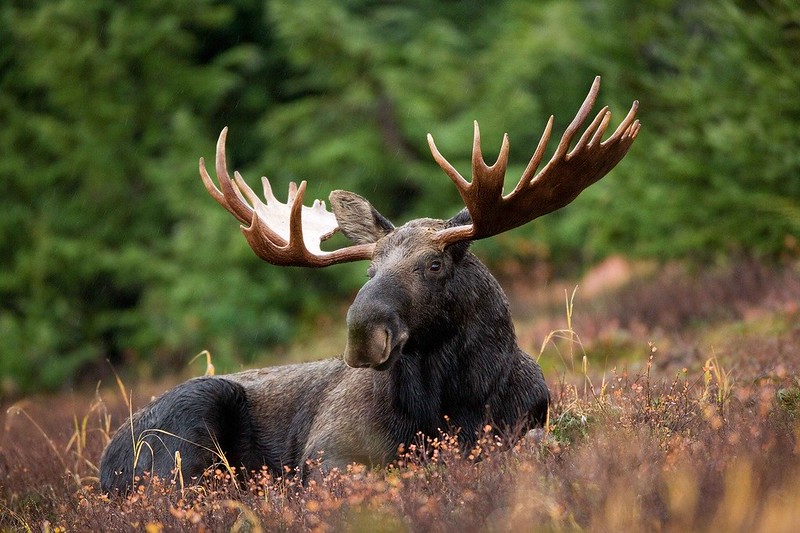
Pin it!
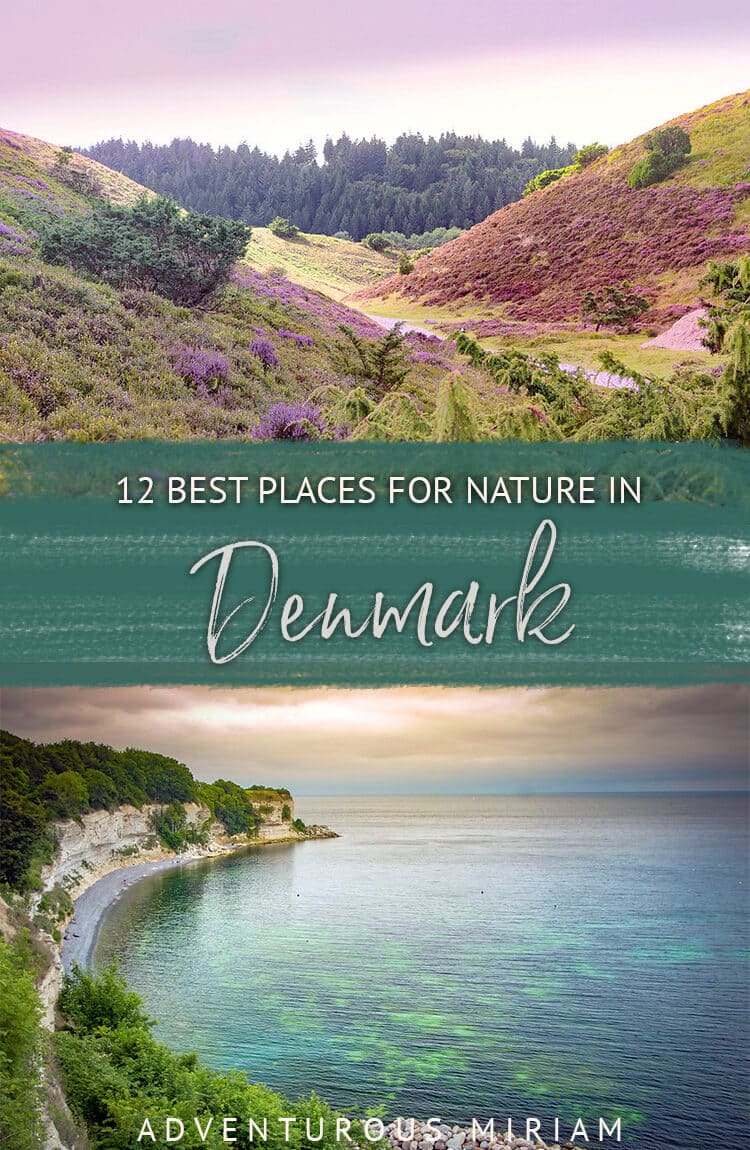
Nature in Denmark FAQ
Does Denmark have beautiful nature?
Yes, Denmark has beautiful nature. Despite being a small country, Denmark offers a diverse range of landscapes, including rolling hills, pristine beaches, dense forests, and picturesque islands.
Some of the most popular natural attractions in Denmark include the white cliffs of Møn, the stunning coastline of Skagen, the tranquil lakes of Silkeborg, and the lush forests of North Zealand.
Denmark is also home to several national parks, such as Wadden Sea National Park, which is a UNESCO World Heritage Site, and Mols Bjerge National Park, which boasts a unique landscape of hills, heathlands, and coastal cliffs.
Does Denmark have lots of nature?
Denmark may not have vast expanses of wilderness like some other countries, but it still has a lot of nature to offer.
With over 7,000 km of coastline, Denmark has plenty of beaches, dunes, and cliffs that you can visit. The country is also home to several forests, lakes, and rivers, as well as numerous parks and nature reserves.
Denmark has a strong tradition of environmental conservation and sustainability, which has helped to preserve and protect the country’s natural beauty.s a unique landscape of hills, heathlands, and coastal cliffs.
What is the natural landscape of Denmark?
The natural landscape of Denmark is mostly flat, with gently rolling hills and lowland areas that lie, on average, not more than 100 feet (30 meters) above sea level.
Denmark has a long coastline, with many beaches, dunes, and cliffs, as well as hundreds of islands. The country is also covered by rich nature, including forests, lakes, rivers, and wetlands, and is home to a variety of flora and fauna.
While it’s not as dramatic or rugged as some other Nordic countries, Denmark’s natural landscape is still diverse and beautiful, with many unique areas to explore.
What is Denmark famous for?
Denmark is famous for many things, including:
Bicycles: Denmark is known for its bike-friendly culture and infrastructure, with many residents using bikes as their primary mode of transportation.
Design: Danish design is renowned for its simplicity, functionality, and elegance, and has had a significant influence on modern design around the world.
Hygge: A Danish word that roughly translates to “coziness,” hygge is a cultural concept that emphasizes comfort, relaxation, and togetherness.
Castles: Denmark is home to many beautiful castles and palaces, some of which date back to the medieval period.
Happiness: Denmark consistently ranks among the happiest countries in the world, thanks in part to its strong social welfare system and high standard of living.
Food: Danish cuisine is known for its simplicity, freshness, and emphasis on local, seasonal ingredients, with dishes like smørrebrød (open-faced sandwiches) and pickled herring being particularly popular.
Vikings: Denmark has a rich history that dates back to the Viking Age, and many of its cultural traditions and symbols (such as the Danish flag) have roots in this period.
Lego: The iconic toy company Lego was founded in Denmark in 1932 and has since become one of the most beloved and recognizable brands in the world.
More posts from Denmark you might like:
- 30 best places to visit in Denmark
- Summer in Denmark: 25 amazing activities
- Winter in Denmark: 15 hygge cold-weather activities
- 12 best beaches in Denmark
- Camping in Denmark for beginners
- The ultimate guide to wild camping in Denmark
- Experience the 7 UNESCO sites in Denmark
- 20 amazing dishes you must try in Denmark
- 36 unique things to do in Aarhus (+ local tips)
- Magical one day in Odense – H.C. Andersen’s home town
- 10 fantastic things to do on Mors Island
- Is Denmark in the Netherlands? Here’s how to tell them apart

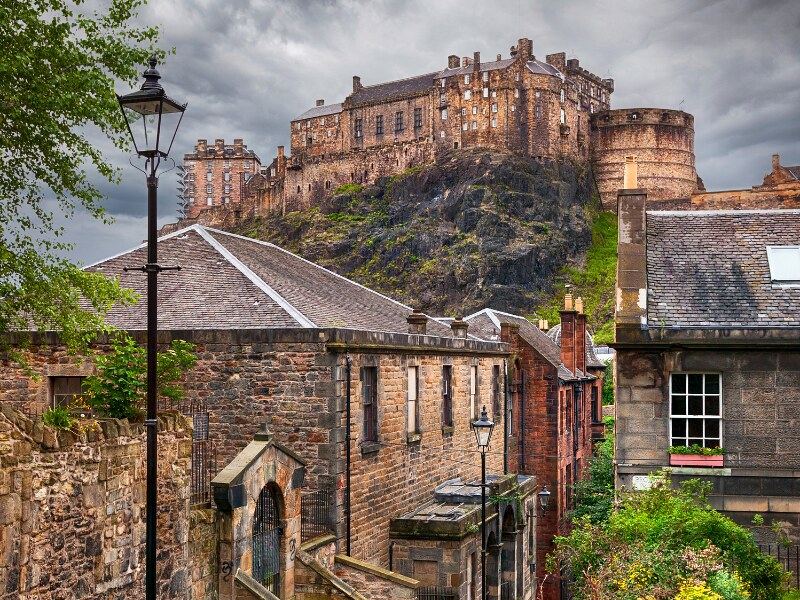
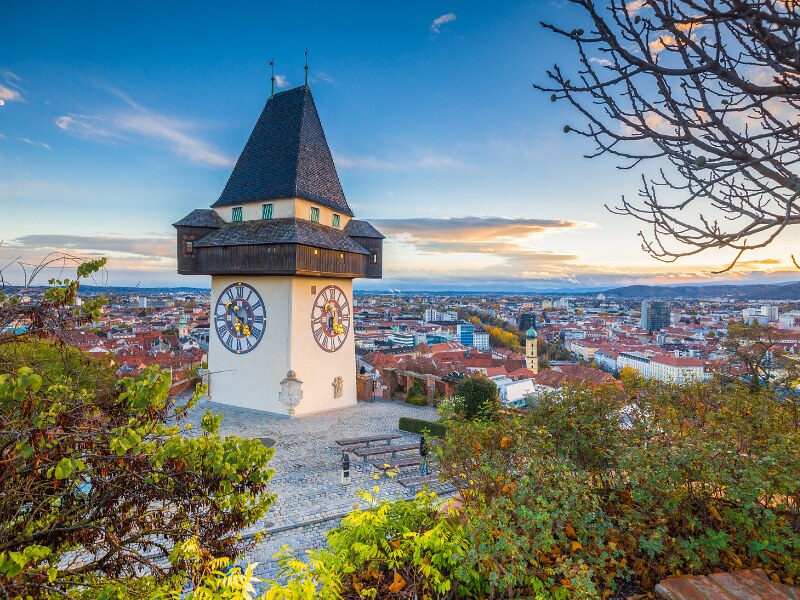

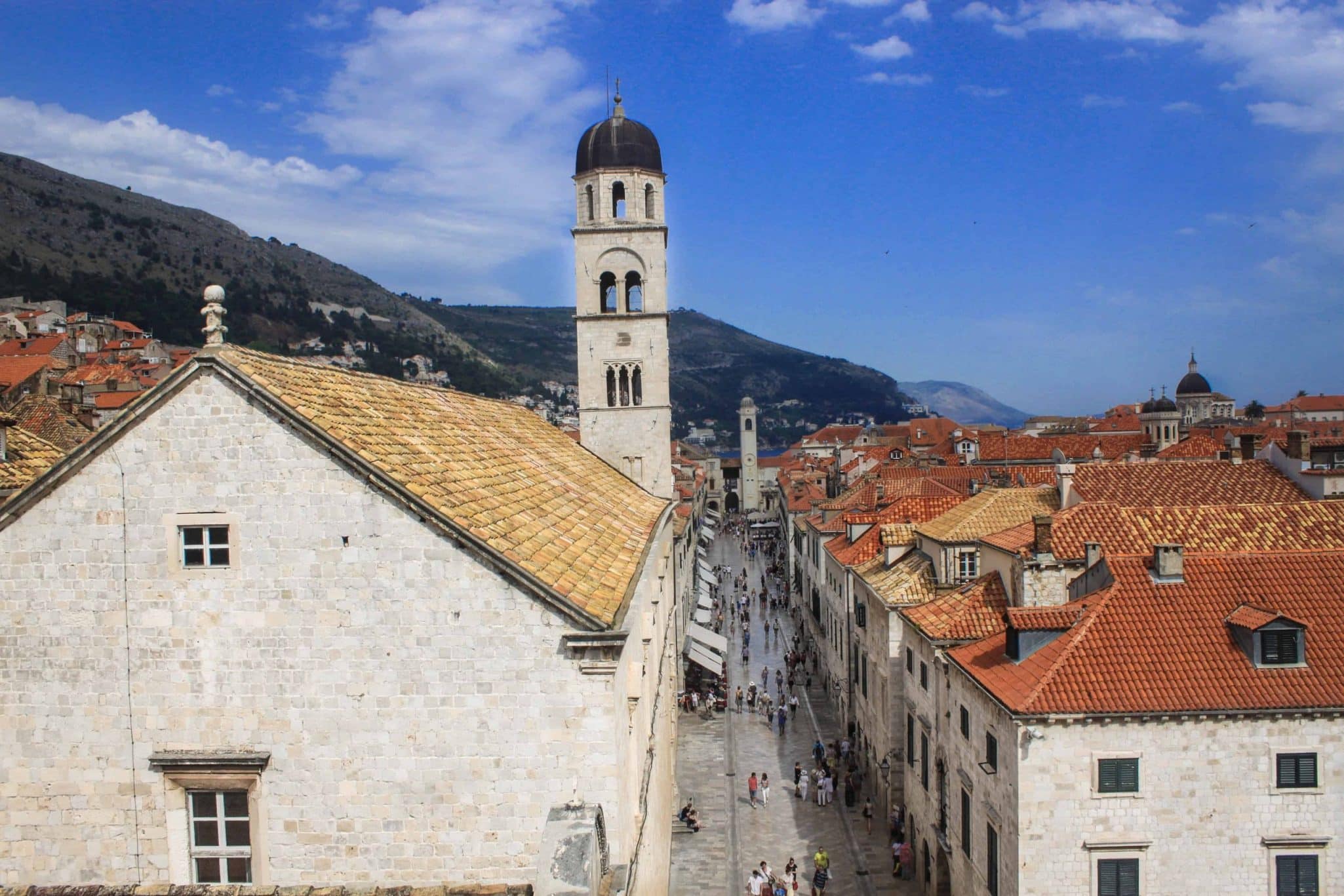
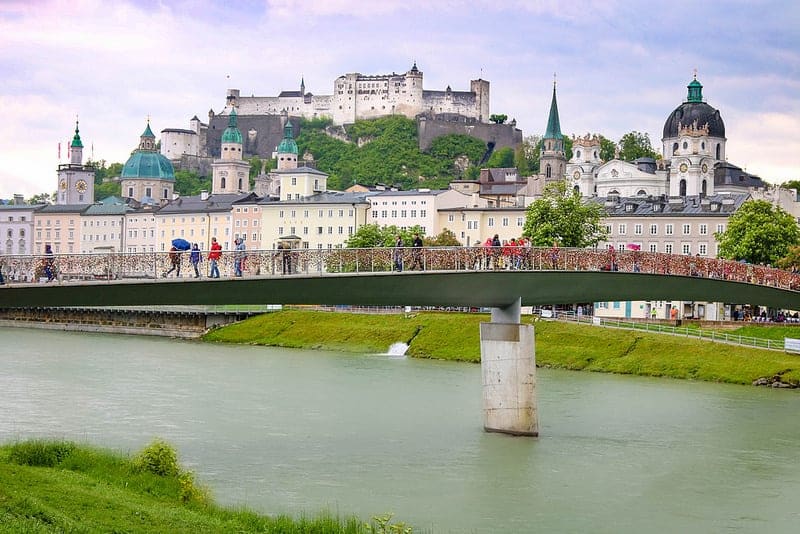
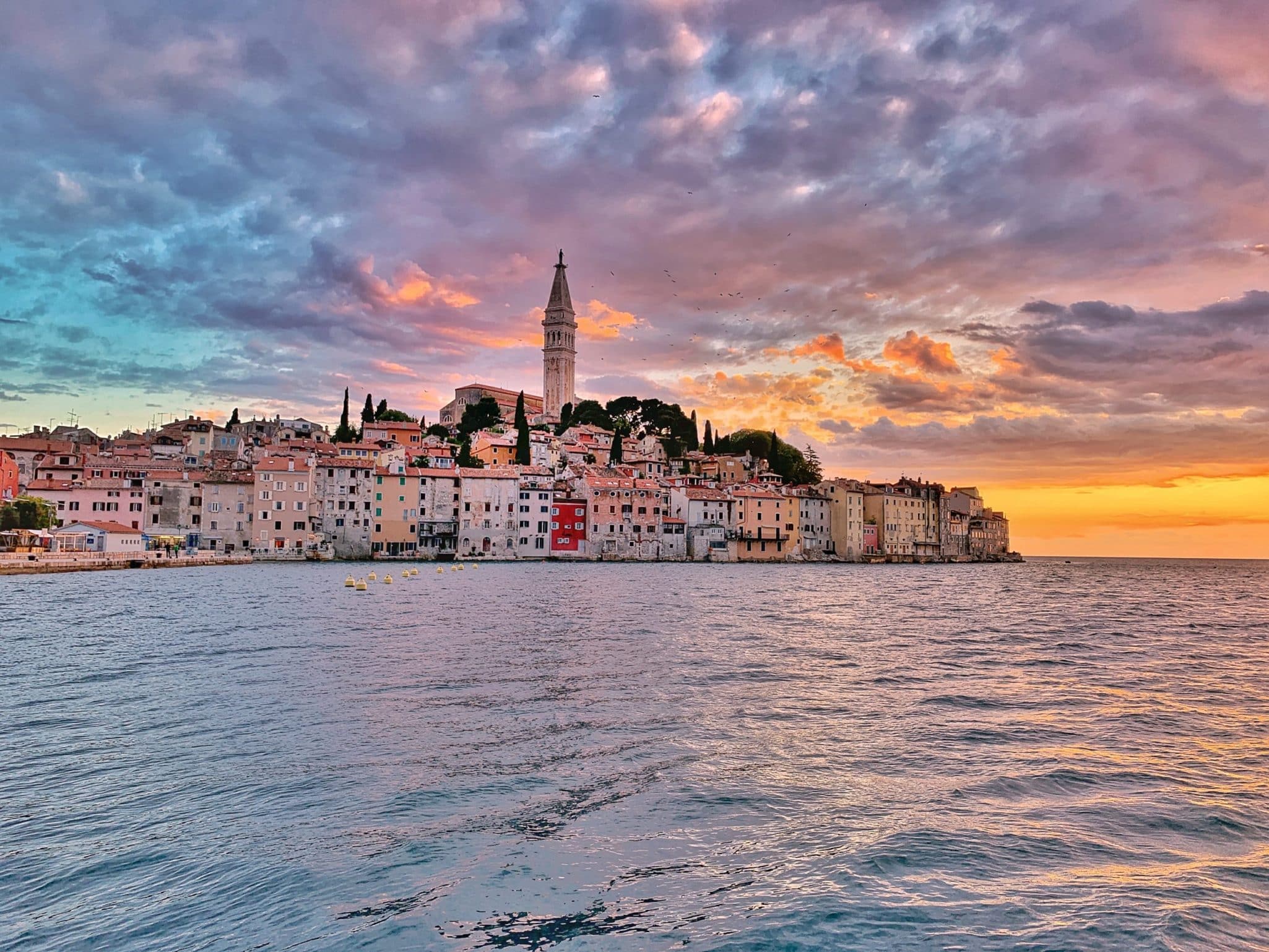
These are indeed some mythical places, thanks for sharing
You’re welcome, Jared! Thanks for reading 🙂
I’m just planning a trip through nord Julland. I will arrive at Aalborg and I will hitchhike around with my tent for 7 days. Thanks for the tips. Btw Eastern Europe is just pure.
Sounds fantastic, Raz. Have a great hitchhiking trip!
Thanks for the suggestion, I’ve not made it to Roskilde yet. Next trip for sure!
So much to see, eh? 🙂
Hello Miriam, I’m happy to have discovered your great site! I’ll be traveling to Denmark with my husband and 15 month old son in May. We’d love to spend some time in nature in addition to our time in Copenhagen. We won’t have a car. Are there any beautiful nature spots you’d recommend that are accessible by train, either for a day trip or night or two? Thanks so much!
Wow, what an incredible list! Each destination seems to offer a unique and breathtaking experience for nature lovers. From dense jungles and towering waterfalls to serene lakes and majestic mountains, these places truly showcase the beauty and diversity of our natural world.